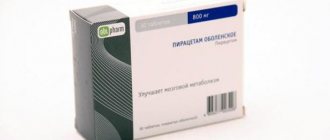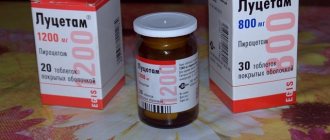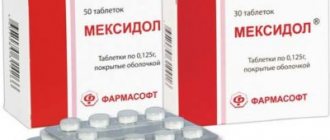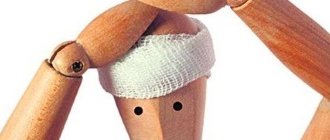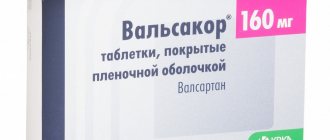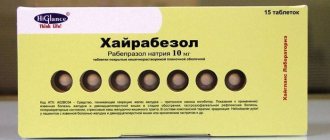Piracetam is the first nootropic or “smart” synthetic drug. Popularly known as the founding father of the Racetam class of nootropics, which also includes Aniracetam, Pramiracetam, Oxiracetam, Phenylpiracetam, Coluracetam, Fasoracetam, Nefiracetam and others.
Developed in 1964 by the Belgian company UCB Pharma. Scientists wanted to create a cyclic derivative of GABA with a stronger sedative and hypnotic effect. But in the course of further research on piracetam, it was found that it does not have a direct effect on GABA receptors and does not have a calming effect. However, it turned out that piracetam promotes the development of cognitive abilities and enhances brain protection. Makes us smart and protects us from neurodegenerative diseases such as Alzheimer's disease and senile dementia.
GABA (gamma-aminobutyric acid) is a chemical that transmits information between nerve cells. Responsible for a calm and concentrated state.
Then in 1972, the term “nootropic” was introduced to describe the effects of piracetam. Compiled from Greek. νους - reason and τροπή - I turn, I interfere, I change. []
You can buy piracetam at the pharmacy. The average price is 100 rubles per package.
Release form and composition
Piracetam is available in the following dosage forms:
- Film-coated tablets: yellow, biconvex, two layers are clearly visible on the cross section (200 mg - 60 pieces in cans, 1 can in a cardboard pack; 400 mg - 10 pieces in strip packs, 2 or 2 in a cardboard pack 3 packs; 800 mg and 1200 mg – 10, 20 and 30 pieces each in blister packs, in a cardboard pack 1, 2, 3, 4, 5, 6, 8, 9, 10 or 12 packs, 10, 20 each, 30, 40, 50, 60, 80, 90, 100 or 120 pieces in polymer cans, 1 can in a cardboard pack);
- Hard gelatin capsules: with a red body and a black cap, size No. 1; the contents of the capsules are white or almost white powder (10 pieces in blisters, 6 blisters in a cardboard pack);
- Granules for preparing syrup for oral administration (for children): light pink, brownish sediment is allowed in the syrup (56 g and 100 g each in glass jars, 1 jar in a cardboard pack);
- Solution for injection 20%: colorless or slightly colored, transparent (5 ml in glass ampoules, 5 ampoules in an insert, 2 inserts in a cardboard box);
- Solution for intramuscular and intravenous administration: colorless or slightly colored, transparent (5 ml in ampoules, 5 ampoules in a blister pack, 1 or 2 packs in a cardboard box).
Active ingredient: piracetam – 200 mg, 400 mg, 800 mg and 1200 mg in 1 tablet; 400 mg in 1 capsule; 2000 mg and 2800 mg in 1 can of granules; 200 mg in 1 ml of solution for injection and solution for intravenous and intramuscular administration.
Auxiliary components:
- Film-coated tablets: polyvinylpyrrolidone, basic magnesium carbonate, potato starch, calcium stearate, film-forming coating Opadry II (talc, soy lecithin, polyethylene glycol 3550, polyvinyl alcohol, iron oxide E172);
- Hard gelatin capsules: propyl parahydroxybenzoate, methyl parahydroxybenzoate, titanium dioxide, gelatin, sodium lauryl sulfate, colloidal silicon dioxide, brilliant blue dye, sunset yellow dye, azorubine dye, Ponceau dye 4R;
- Granules for making syrup: sugar and fillers;
- Injection solution 20%: diluted acetic acid, sodium acetate trihydrate, distilled water;
- Solution for intravenous and intramuscular administration: disubstituted potassium phosphate, monosubstituted sodium phosphate, distilled water.
May protect against myoclonic seizures
Myoclonic seizures are described as sudden, involuntary muscle spasms. They can make daily activities such as writing, washing, and eating difficult ().
Numerous studies have shown that piracetam may protect against myoclonic seizures.
For example, a study of a 47-year-old woman who suffered from myoclonic seizures found that taking 3.2 grams of piracetam per day stopped her seizures ().
Similarly, a study of 18 adults with Unferricht-Lundborg disease—a type of epilepsy that causes myoclonic seizures—found that taking 24 grams of piracetam per day improved symptoms and signs of disability caused by myoclonic seizures ().
In another study, 11 people took up to 20 grams of piracetam daily for 18 months along with their existing medications to further help reduce myoclonic seizure symptoms. Researchers have found that piracetam helps reduce the overall severity of myoclonic seizures ().
Conclusion:
Piracetam may reduce the symptoms of a myoclonic seizure, which include difficulty writing, washing, and eating.
Indications for use
Piracetam is used in psychiatric, drug addiction and neurological practice.
In psychiatry:
- Comprehensive treatment of depressive conditions resistant to antidepressants;
- Sluggish-apathetic defective states in atrophic and senile processes, schizophrenia and psychoorganic syndromes of various origins;
- Complex treatment of mental illnesses that occur on “organically defective soil”;
- Epilepsy;
- Astheno-dynamic and neurotic depressive states of various etiologies with a predominance in the clinical picture of senesto-hypochondriacal and asthenic disorders, signs of adynamia and phenomena of ideational inhibition;
- Poor tolerability of neuroleptics and other psychotropic drugs (in order to prevent or eliminate the mental, neurological and somatovegetative complications caused by them).
In narcology:
- Chronic alcoholism with persistent mental disorders (intellectual-mnestic disorders, asthenia);
- Relief of pre- and delirious, withdrawal states in alcoholism and drug addiction, as well as in the case of acute poisoning with morphine, phenamine, barbiturates and alcohol.
In neurology:
- Cerebrovascular accidents;
- Diseases of the nervous system, accompanied by disturbances in the emotional-volitional sphere and a decrease in intellectual and mental functions;
- Vascular diseases of the brain (hypertension, atherosclerosis, vascular parkinsonism) with symptoms of chronic cerebrovascular insufficiency (headache, dizziness, speech impairment, attention and memory);
- Consequences of intoxication and brain injuries, comatose states (in order to increase mental and motor activity);
- Symptomatic therapy in patients with senile dementia of the Alzheimer's type and Alzheimer's disease.
Piracetam is also used in the complex treatment of sickle cell anemia.
For children, the drug is prescribed for oligophrenia, cerebral palsy, mental retardation, and when it is necessary to eliminate the consequences of perinatal brain damage and speed up the learning process.
Useful properties of piracetam
Memory . Perhaps one of the main and proven benefits of taking piracetam. It's all about its interaction with acetylcholine and glutamate. It modulates (modifies) their receptors and enhances their effectiveness. Clinical studies confirm this. However, it is important to note that the memory enhancement effects build up gradually. You can notice this after 1-2 weeks. [, , ]
Cognitive functions . Piracetam increases synaptic plasticity. This means that more new neurons are created, their development and growth are supported, and the connection between them improves. From a practical point of view, this manifests itself in the form of improved concentration, increased memory and speed of remembering information. [, ]
Brain protection . Piracetam improves cerebral blood flow, supplies the brain with essential nutrients and removes toxins from nerve cells. In this way, it protects the brain against age-related neurodegeneration and the consequences of TBI and stroke. [, , ]
Alcoholism . Long-term alcohol consumption is associated with increased neuronal loss and increased deposits of lipofuscin (“intracellular debris”) in the hippocampus. This area of the brain is associated with emotional control, spatial navigation, and long-term memory. Alcohol reduces the amount of oxygen reaching the brain, while piracetam has the opposite effect. It protects the brain from damage and prevents memory loss caused by alcohol consumption. []
Contraindications
- Acute stage of hemorrhagic stroke;
- Renal failure (creatinine clearance less than 20 ml/min);
- Huntington's chorea;
- Agitated depression (with anxiety);
- Pregnancy and breastfeeding period;
- Children's age up to 1 year (for tablets) and up to 5 years (for capsules);
- Hypersensitivity to components.
Piracetam is prescribed with caution in cases of extensive surgical interventions, hemostasis disorders, severe bleeding, and in patients with chronic renal failure with a creatinine clearance of 20-80 ml/min.
Possible negative reactions
Even short-term use of Nootropil can cause the following negative reactions in the patient:
- increased irritability;
- nervousness;
- state of restlessness, anxiety;
- depression;
- hallucinations;
- sleep disturbances, including insomnia;
- gastrointestinal disorders;
- nausea, vomiting;
- skin irritation, rash;
- epileptic seizures;
- weight gain.
If adverse reactions occur, it is necessary to adjust the dose of Nootropil.
Directions for use and dosage
Dosage forms for oral administration The drug in the form of tablets, capsules and granules for the preparation of a solution is taken orally, before meals.
At the beginning of therapy, 800 mg is prescribed three times a day. After the condition improves, the single dose of piracetam is gradually reduced to 400 mg. The daily dose is 30-160 mg/kg, the frequency of use is from 2 to 3-4 times a day (if necessary). The duration of the course ranges from 2-3 weeks to 2-6 months. If necessary, you can repeat the course.
For elderly patients with long-term treatment of psychoorganic syndrome, piracetam is prescribed at a dose of 1200-2400 mg per day; during the first two weeks, the loading dose is up to 4800 mg per day. During drug therapy, cardiovascular, psychotropic and other drugs can be used simultaneously.
In the post-traumatic period and when treating the consequences of comatose states, the initial dose is 9000-12000 mg per day, maintenance - 2400 mg. Course – 3 weeks.
Children over 5 years old are prescribed 1 capsule of Piracetam 3 times a day. The maximum dose is 1800 mg per day. The duration of treatment ranges from 2 weeks to 2-6 months.
For alcoholism, during the period of manifestation of alcohol withdrawal syndrome, the drug is prescribed at a dose of 12,000 mg per day, maintenance therapy - 2,400 mg per day.
For sickle cell anemia, Piracetam is used in a daily dose of 160 mg/kg, divided into 4 equal doses.
To prevent sleep disturbances, the last single dose is taken no later than 17:00.
Dosage forms for injection use Piracetam in the form of a solution is used intramuscularly and intravenously by stream or drip. The daily dose should be divided into 2-4 doses.
Recommended doses:
- Dizziness and related imbalances: 2400-4800 mg per day;
- Symptomatic treatment of psychoorganic syndrome: in the first week - 4800 mg per day, maintenance dose - 1200-2400 mg per day;
- Sickle cell vaso-occlusive crisis (in children and adults): intravenously, 300 mg/kg per day, divided into four equal doses;
- Cortical myoclonus: the initial dose is 7200 mg per day, then every 3-4 days the dose is increased by 4800 mg per day until a maximum daily dose of 24000 mg is reached. Therapy is continued throughout the entire period of the disease, trying to reduce the dose every 6 months or discontinue the drug, reducing the dose by 1200 mg per day every 2 days. If the therapeutic effect is insignificant or absent, treatment is stopped;
- Dyslexia in children over 8 years of age (in combination with other methods): 3200 mg per day, divided into 2 equal doses.
Patients with mild chronic renal failure are prescribed 2/3 of the usual dose of piracetam in 2-3 doses; moderate chronic renal failure - 1/3 dose in 2 divided doses; severe chronic renal failure - 1/6 of the usual dose once.
Customer Reviews
Irina Morenko, Petropavlovsk-Kamchatsky
“I have vegetative-vascular dystonia, which is accompanied by poor blood circulation to the brain. This makes itself felt because I feel bad, my memory has deteriorated and become absent-minded. I underwent an examination, after which I was prescribed a drug. I was satisfied with the result. The effect was not noticed immediately, but at the end of the therapy I managed to feel like a human being.”
Evgeny Ilyin, Moscow
“It was with the help of this means that I managed to close the session. Brain activity improves and general condition improves. Just drink according to the instructions. There were no side effects."
Side effects
- Digestive system: vomiting, nausea, abdominal pain, diarrhea;
- Central nervous system: insomnia, imbalance, anxiety, irritability, depression, motor disinhibition, headache, drowsiness, ataxia, asthenia, hallucinations, mental agitation, exacerbation of epilepsy, confusion;
- Metabolism: increased body weight;
- Skin: itching, rashes, dermatitis;
- Sense organs: vertigo;
- Allergic reactions: angioedema, hypersensitivity, anaphylactic reactions;
- Local reactions: thrombophlebitis, pain at the injection site;
- Other reactions: decreased blood pressure, fever, increased sexual activity.
In children, especially with mental retardation, the following side effects are possible when taking Piracetam: restlessness, fussiness, imbalance, increased conflict, anxiety, decreased ability to concentrate, motor disinhibition, irritability.
How does piracetam work?
Piracetam interacts with neurotransmitters. Neurotransmitters are chemicals found in the brain that transmit signals between nerve cells. Each of them is responsible for specific functions: some calm a person and allow him to concentrate, while others increase energy and reactivate the body's hidden reserves. The entire functionality of the human body depends on their work, and an imbalance in their production leads to neurodegenerative diseases.
Piracetam affects acetylcholine and glutamate . Acetylcholine is involved in learning, memory and concentration. And glutamate is involved in 90% of all synaptic connections and is especially important in synaptic plasticity, which is considered the basis of learning and memory.
Choline is a precursor to acetylcholine and a very important nutrient. It maintains the structure of cell membranes, controls the transport of fat from the liver and ensures the proper functioning of the nervous system. The liver produces small amounts of choline. However, in order to get all the choline you need, you must get it from external sources. Many foods contain choline. Good sources include eggs (mostly the yolk) and meat (especially liver).
Increased acetylcholine improves cognitive function. However, such an increase depletes the reserves of the original source - choline. A lack of choline leads to increased side effects of piracetam, or to a weakened manifestation of the positive properties. For this reason, supplemental choline supplementation is often recommended.
But it’s not just neurotransmitters that make piracetam strong. It also increases the permeability of the neuronal membrane , which controls the movement of substances in and out of cells. This makes it easier for nutrients to enter cells and waste (toxins) to be removed. This increases cerebral blood flow, enriched with oxygen and glucose. Increases energy and strengthens the brain. And removing toxins from the body slows down the aging process of the brain.
special instructions
In case of acute brain lesions, the drug should be prescribed in combination with other methods of restorative and detoxification therapy, and in psychotic conditions - with psychotropic drugs.
In case of sleep disturbances, it is recommended to cancel the evening dose of piracetam and add this dose to the daytime dose.
When treating patients with cortical myoclonus, abrupt withdrawal of piracetam should be avoided due to the risk of recurrence of attacks.
During treatment, it is recommended to periodically monitor kidney function indicators, and in case of liver diseases, the functional state of the liver.
Piracetam penetrates the filter membrane of the hemodialysis machine.
During the period of therapy, it is recommended to be careful when driving vehicles and performing other potentially dangerous work that requires speed of psychomotor reactions and increased concentration.
Comparison of drugs
There are several decent effective drugs that are prescribed for the same indications.
Piracetam or Glycine
Glycine is related to amino acids. This amino acid takes an active part in metabolic processes that are observed in the spinal cord and brain. The drug normalizes blood flow and improves thinking. When combining drugs, the effect is enhanced.
The range of application of the first drug is wider. It can be used even with dementia. The combined use of two means improves the process of perception and memorization of information material. But it is imperative to strictly follow the indicated treatment regimen prescribed by the doctor. As for the price, the cost is within the same limits.
Piracetam or Actovegin
It is difficult to make a choice which drug is best to take. Both drugs can improve the patient's condition. It is possible to take two drugs at the same time, but only after consultation with your doctor. The complex is successfully used to treat children with cerebral palsy. The nootropic composition of the first goes well with the properties of the second medication.
The described drugs have a positive effect on humoral immunity. This is reflected in the improvement of the condition. Piracetam is dangerous for pregnant women. Therefore, when carrying a fetus, you should choose Actovegin. You should not self-medicate and spontaneously prescribe medications. But the price of the second medicine is too high.
Drug interactions
The drug increases the effectiveness of indirect anticoagulants (when taking high doses of piracetam), thyroid hormones and psychostimulants.
When prescribed simultaneously with thyroid hormones, central effects may develop - irritability, tremor, confusion, anxiety, sleep disturbances.
Piracetam enhances the central effect of neuroleptics (anxiety, tremor, etc.).
Piracetam solution is pharmaceutically compatible with 0.9% sodium chloride solution, fructose (5%, 10% and 20%) and dextrose (5%, 10% and 20%) solutions, 20% mannitol solution, Ringer's solution and hydroxyethyl starch (6 % and 10%).
Overdose
Cases of overdose have been observed rarely, since a sufficiently large amount of the drug can be taken per day. If the permitted dose is significantly exceeded, the following reactions are possible:
- Insomnia.
- Tremor.
- Increased severity of side effects.
- Exacerbation of heart failure.
There is no specific antidote to Piracetam. Patients are advised to drink more fluids to quickly eliminate excess medication in the urine. In severe cases, hemodialysis is performed, but its effectiveness is only 50%, since the drug is able to penetrate filter membranes.
Summarize
- Piracetam is a synthetic nootropic that can enhance mental performance.
- Its positive effects on the brain seem to be more pronounced in older people, as well as in people with mental health problems, dementia or learning disorders such as dyslexia.
- However, there is very little research on piracetam, and most of the research is very old, so new research is needed before it can be recommended.
- Piracetam is relatively safe for most people. However, if you are taking medications or have a medical condition, talk to your doctor before taking this drug.
